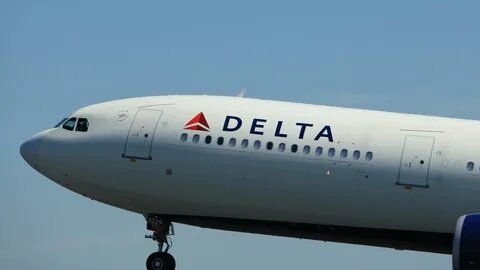On May 28, 2025, Delta Air Lines Flight DL275, en route from Detroit Metropolitan Airport (DTW) to Tokyo Haneda Airport (HND), was unexpectedly diverted to Los Angeles International Airport (LAX) due to a technical issue. This article delves into the reasons behind the diversion, the airline’s response, and the implications for passengers and aviation safety.
Understanding the Cause of the Diversion
Approximately five hours into the flight, while cruising at 38,000 feet over the North Pacific Ocean, the flight crew received alerts indicating a malfunction in the Rolls-Royce Trent XWB engine’s anti-ice system. This system is crucial for preventing ice buildup on engine components during high-altitude flights in freezing conditions.
Technical Details of the Anti-Ice System Failure
The anti-ice system operates by directing hot bleed air from the engine’s compressors to critical components, maintaining temperatures between 400 to 600°F to prevent ice formation. In this instance, sensor data revealed:
- A 50% reduction in airflow
- A 25% decrease in bleed air pressure
- A 300% slowdown in valve response time
- A 30% drop in temperature below normal operating levels
These anomalies signaled a significant malfunction, prompting the crew to initiate a diversion to the nearest suitable airport equipped to handle such emergencies.
Decision to Divert to Los Angeles
The choice of LAX was strategic, considering several factors:
- Proximity and Facilities: LAX is a major Delta hub with extensive maintenance facilities capable of servicing the Airbus A350-900.
- Safety Protocols: Landing at the nearest airport with appropriate facilities is standard procedure in aviation to ensure passenger safety.
- Weather Conditions: LAX offered favorable weather conditions for a safe landing, unlike other potential diversion airports.
At approximately 1:08 AM local time, the aircraft landed safely at LAX after more than 12 hours in the air. All 287 passengers and crew members were unharmed.
Passenger Experience and Airline Response
Upon landing, Delta’s ground crew promptly assisted passengers:
- Rebooking: Passengers were rebooked on alternative flights to their final destinations.
- Accommodations: Hotel rooms and meal vouchers were provided for those requiring overnight stays.
- Communication: Delta maintained clear communication, keeping passengers informed throughout the process.
While the diversion caused delays and inconveniences, passengers generally appreciated the airline’s swift and organized response.
Financial and Operational Impact
The diversion incurred significant costs for Delta Air Lines:
- Fuel and Landing Fees: Approximately $500,000
- Maintenance and Inspection: Around $300,000
- Passenger Services: Approximately $800,000 for accommodations, meals, and rebooking
- Lost Revenue: Estimated at $2.3 million due to the canceled Tokyo leg and cargo losses
In total, the incident cost Delta nearly $2.8 million.
Aviation Safety and Technological Considerations
This incident underscores the importance of advanced monitoring systems in aviation. Predictive maintenance technologies, utilizing AI and machine learning, could potentially detect early signs of system failures, allowing for proactive measures before departure. Implementing such technologies could enhance safety and reduce the likelihood of in-flight emergencies.
Conclusion
The diversion of Delta Flight DL275 to LAX highlights the airline’s commitment to passenger safety and the effectiveness of established emergency protocols. While the incident resulted in financial costs and passenger inconveniences, the priority given to safety ensured a positive outcome. It also serves as a reminder of the critical role of technology and preparedness in modern aviation.
FAQs
1. Why was Delta Flight DL275 diverted to LAX?
The flight was diverted due to a malfunction in the Rolls-Royce Trent XWB engine’s anti-ice system, which is vital for preventing ice buildup during high-altitude flights.
2. Were passengers and crew safe during the diversion?
Yes, all 287 passengers and crew members were unharmed and safely disembarked upon landing at LAX.
3. What assistance did Delta provide to passengers after the diversion?
Delta arranged hotel accommodations, meal vouchers, and rebooking on alternative flights for affected passengers.
4. How much did the diversion cost Delta Air Lines?
The total estimated cost of the diversion was approximately $2.8 million, covering fuel, maintenance, passenger services, and lost revenue.
5. Could predictive maintenance have prevented the diversion?
Yes, advanced monitoring systems utilizing AI and machine learning could potentially detect early signs of system failures, allowing for proactive measures before departure.

